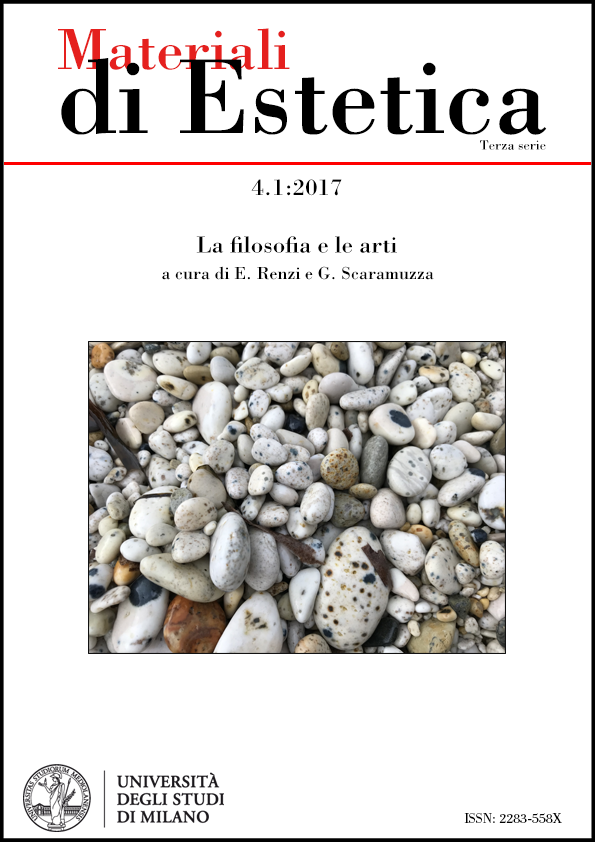Nota sul rapporto tra allegoria e analogia
DOI:
https://doi.org/10.13130/mde.v%25vi%25i.9556Abstract
Through an analysis of some crucial passages from Walter Benjamin’s On Language as Such and the Language of Man and The Origin of German Tragic Drama, the paper discusses the role and significance of the notion of "allegory" in philosophy and offers some insights into the idea of relationship between Benjamin’s notion of "allegory" and the “analogy” from the point of view of system theory, synthesis and exhibition of a radical negativity beyond any conceptual understanding.
Riferimenti bibliografici
AA.VV., Interpretation and Allegory. Antiquity to the Modern Period, ed. by J. Whitman, Brill , Leiden-Boston-Köln 2003.
CAMPI, Riccardo, Favole per dialettici. Allegoria e modernità, Mimesis, Milano 2005.
FLETCHER, Angus, Allegory. The Theory of a Symbolic Mode, Cornell University Press, Ithaca N.Y. 1964.
MELANDRI, Enzo, La linea e il circolo. Studio logico-filosofico sull’analogia, Il Mulino, Bologna 1968.
OHLY, Friedrich, Geometria e memoria. Lettera e allegoria nel Medioevo, a cura di L. Ritter Santini, Il Mulino, Bologna 1985.
PÉPIN, Jean, Mythe et allégorie. Les origines grecques et les contestations judéo-chrétienne, Aubier, Paris 1958.
PINOTTINI, Marzio, Simbolo e allegoria nell'estetica moderna, Bulzoni, Roma 1999.
PRZYWARA, Erich, Analogia Entis, a cura di P. Volonté, Vita e Pensiero, Milano 1995.
RAMELLI, Ilaria, LUCCHETTA, Giulio A., Allegoria. Vol. 1: L'età classica, Vita e Pensiero, Milano 2004.
SASSO, Gennaro, Allegoria e simbolo, Aragno, Torino 2014.
ZAMBON, Francesco, Romanzo e allegoria nel Medioevo, La Finestra, Lavis 2000.






